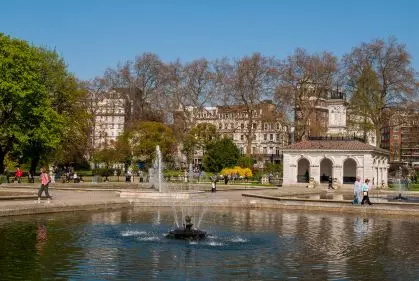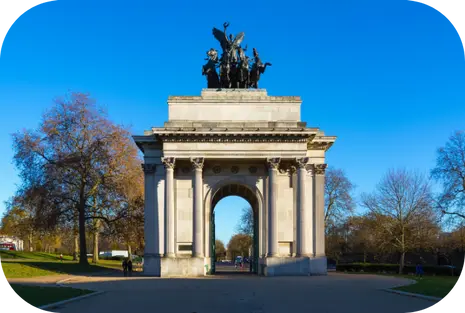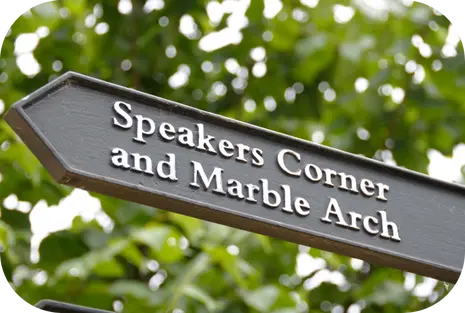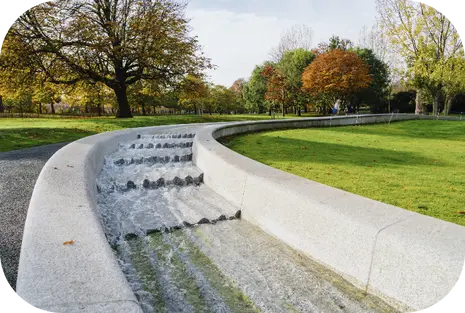London, one of the world’s most vibrant and culturally rich cities, is renowned for its historic landmarks, stunning architecture, and of course, its spectacular parks. Among these, Hyde Park stands out as one of the most iconic and beloved green spaces in the British capital.
Covering over 140 hectares, Hyde Park is an oasis of tranquility amidst the urban hustle and bustle, offering a perfect blend of nature, culture, and history. If you’re visiting London, a stroll through Hyde Park is an experience you simply cannot miss.

A Walk Through the History of Hyde Park
Hyde Park has a rich and fascinating history that dates back to the 16th century when it was acquired by Henry VIII to be used as a hunting ground. Over time, the park was opened to the public, becoming a place of recreation and leisure for Londoners.
Today, Hyde Park is much more than just a park; it’s a symbol of the city and a venue for cultural events, concerts, and demonstrations. Its natural beauty and historic monuments make it a must-see for any visitor.
Iconic Monuments and Landmarks of Hyde Park
Hyde Park is home to a wealth of monuments and points of interest that stand out for both their historical value and beauty. Here are some of the most essential ones:
1. The Serpentine Lake

The Serpentine Lake is one of the most prominent features of Hyde Park. This artificial lake, which stretches over nearly 12 hectares, was created in 1730 by order of Queen Caroline, wife of George II. It’s an ideal spot to relax, take a boat ride, or simply enjoy the views. In the summer, the Serpentine Lido offers the opportunity to swim in its waters, a tradition beloved by Londoners. The lake is also home to a wide variety of waterfowl, making it a paradise for nature lovers.
2. Wellington Arch

Located at the southeast corner of Hyde Park, Wellington Arch is one of London’s most recognizable monuments. Built in 1826 to commemorate the Duke of Wellington’s victories over Napoleon, this impressive neoclassical arch is one of the main entrances to the park. From its upper terrace, you can enjoy panoramic views of London, including the nearby Buckingham Palace. The Arch also houses a small gallery with exhibitions related to Britain’s military history.
3. Speaker’s Corner

Speaker’s Corner is undoubtedly one of the most iconic spots in Hyde Park. Situated near the Marble Arch entrance, this area is famous for being a symbol of free speech. Since the 19th century, Speaker’s Corner has been a place where anyone can express their ideas and opinions on any topic, without fear of censorship. Over the years, it has been the site of historic speeches and has attracted renowned speakers, including figures like Karl Marx and George Orwell. Although the number of speakers has decreased today, it remains a fascinating place to visit, especially on Sunday mornings.
4. Diana, Princess of Wales Memorial Fountain

Inaugurated in 2004, the Diana, Princess of Wales Memorial Fountain is one of the most poignant sites in Hyde Park. This memorial, designed by American architect Kathryn Gustafson, is an oval granite fountain that symbolizes the life of the princess. The design of the monument reflects Diana’s openness and love for people. Visitors are welcome to walk around the fountain and even cool off in its waters on hot summer days. It’s a place of peace and reflection, perfect for paying tribute to one of the most beloved figures in modern history.
5. The Pet Cemetery
This small, charming corner, located near Victoria Gate, is one of the park’s best-kept secrets and has a touching history.

Hyde Park’s Pet Cemetery, founded in 1881, is one of the first pet cemeteries in the world. It all began when the gatekeeper of Victoria Lodge allowed some friends to bury their beloved dog in the park’s gardens. From then on, the cemetery became a place where many Victorian families chose to bid a final farewell to their cherished pets.
This intimate space, with small stone headstones, is dedicated to over 300 dogs, cats, and other animals buried there. Each headstone is inscribed with names and messages of love from the owners, reflecting the deep emotional bond between families and their pets. Although the cemetery is no longer open for new burials, it remains a place of historical and emotional interest for visitors.

How to get to Hyde Park with the London City Tour Hop On Hop Off Bus
One of the most convenient and enjoyable ways to reach Hyde Park is through the London City Tour Hop On Hop Off tour bus. Hyde Park is strategically located near several stops of the tour bus, making it easily accessible from any point in the city.
Red Route and Blue Route:
If you’re on the red or blue route of the London tour bus, you can get off at:
- Marble Arch (stops 16 and 17), which will leave you just steps away from the park’s northern entrance.
- Hyde Park (Queen Elizabeth Gate) – Stop 15: This stop is located right in the middle of Hyde Park and Buckingham Palace.
Hyde Park is, without a doubt, one of London’s most iconic places. Its combination of nature, history, and culture makes it a must-visit for any tourist. Whether you’re interested in its monuments, enjoy a stroll along its tree-lined paths, or simply want to relax by the lake, Hyde Park has something for everyone. And don’t forget, the best way to get there is by using the Hop On Hop Off London tour bus, ensuring a comfortable and enriching experience as you explore this incredible city. Don’t miss out!
Do you know of any other must-see spots within Hyde Park? Share with us on social media and tag us in your photos exploring this iconic London location!✨


